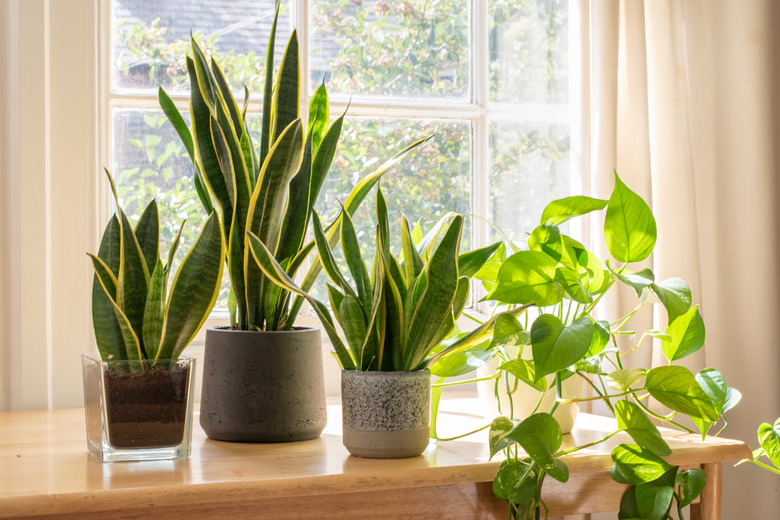Life Cycle Of A Snake Plant
We may receive a commission on purchases made from links.
The snake plant is the perfect plant for beginning gardeners, children, and those with a brown thumb. It has the reputation for being virtually indestructible since it can go a full month between waterings and can thrive in dark shade. The sword-shaped leaves and their fresh green shading edged with lines of gold make the snake plant a beauty to behold. This easy-care succulent is also one of the best houseplants for pulling toxins from the air. It's an unusual plant from seed through maturity and is well worth getting to know.
Meet the Snake Plant
Meet the Snake Plant
No useful, attractive plant has had more undesirable nicknames than the snake plant (Dracaena trifasciata, formerly Sansevieria trifasciata). A few of its alternative common names are mother-in-law's tongue, viper's bowstring hemp, and St. George's sword. Native to tropical Africa, snake plants are extremely popular houseplants in the United States.
The sword-shaped leaves of this succulent grow vertically from a basal rosette, standing like upright knife blades with pointy tip upward. A single plant may have 10 or 20 leaves or even more. Outdoors in the right climate, they can form clumps of leaves some 12 feet tall. There are many varieties of snake plants, but Dracaena trifasciata is the most common. Snake plants are among the best houseplants for removing toxins, like benzene and formaldehyde, from the air.
From Seed to Seedling to Plant
From Seed to Seedling to Plant
Most snake plants available in commerce were grown from cuttings, transplanting small "pups," or root division. However, the life cycle of the snake plant actually starts from a seed. The round red seeds grow on central shoots and appear after the flowers. Note that indoor plants flower very rarely, and the seeds have a low germination rate.
However, a fertile seed that is placed in soil will sprout and send down roots. The seedlings should poke their heads out of the soil some three to six weeks after planting. At that point, the shoot is a young snake plant. Over its lifetime, the leaves will grow and multiply. The roots will send up "pup" plants — short new plants that appear at the base of the snake plant. These can be removed to create brand-new plants or left to mature as part of the snake plant clump.
Under ideal conditions, mature snake plants produce fragrant stalks with whitish-green or light-yellow flowers that develop into seeds over time. These seeds can be used to grow new snake plants. The maximum life span of the snake plan is uncertain, but plants have been known to live 25 years and longer.
Snake Plant Cultural Care
Snake Plant Cultural Care
Snake plants are famed for their tolerant ways. They can survive without water for months and can live in dark corners without wilting, but they grow best with bright, indirect light and regular watering. As is the case for many succulents, overwatering is a bigger threat to the plant than underwatering, but it's fine to give the plant a drink when the top inch of soil is dry. Don't worry about repotting the plant. Container snake plants like to be snug in their pot and can remain in the same pot for decades.
The plants are hardy in USDA plant hardiness zones 10b through 12a, so gardeners in those zones can install snake plants in the landscape. The soil should be sandy and permit easy draining. No fertilizer is needed for the plant to thrive, but it doesn't hurt to apply a mild cactus fertilizer during the growing season.
